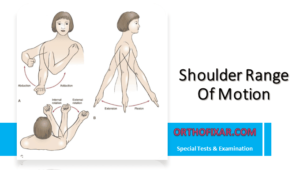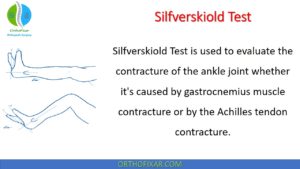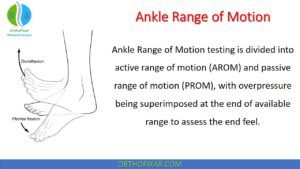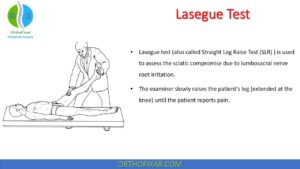Challenges and Solutions in Managing Orthopedic Practices

Orthopedic practices are facing increasing pressure to balance patient care with the complex realities of practice management. From evolving payer rules to time-consuming administrative work, many practices struggle to maintain financial stability. Billing errors, claim denials, and inefficient workflows often create unnecessary costs and delays.
To address these challenges, many providers are turning to specialized orthopedic billing services and modern practice management solutions. These approaches streamline revenue cycles while also enhancing compliance to lay the foundation for sustainable growth.
What Are the Major Billing and Financial Hurdles for Managing Orthopedic Practices?
Orthopedic practices deal with some of the most complex medical billing scenarios. From handling intricate surgical codes to meeting varying payer demands, these challenges directly affect practice revenue:
1. Complexity in Orthopedic Coding
Orthopedic billing involves multiple procedure codes, modifiers, and bundled payment structures. Frequent updates in coding guidelines make it difficult for in-house teams to stay current. Without specialized expertise, practices risk underbilling, overbilling, or claim denials, all of which reduce revenue and increase compliance concerns.
2. Prior Authorizations and Payer Rules
Many orthopedic procedures, especially surgeries and advanced imaging, require prior authorizations. Since each payer has unique requirements, staff often spend hours navigating approvals. This creates delays in treatment, slows down cash flow, and increases administrative workload.
3. High Denial Rates and Accounts Receivable
Orthopedic practices face above-average denial rates due to coding errors and missing documentation. Without consistent follow-up, denied claims accumulate, pushing accounts receivable higher. This weakens cash flow and increases the risk of permanent revenue loss for the practice.
How Can Orthopedic Billing Services Solve These Challenges?
Overcoming the financial and administrative barriers in orthopedic practices requires the right expertise and technology. The following is what can be done to get targeted solutions that reduce errors and improve revenue collection.
1. Specialized Billing Expertise
Orthopedic billing teams are trained to manage complex surgical codes, modifiers, and payer-specific requirements. Their expertise reduces claim denials, improves coding accuracy, and ensures faster reimbursements.
2. Automation and Predictive Analytics
Modern billing solutions use automation and AI-driven analytics to flag potential coding errors, predict claim risks, and streamline repetitive tasks. This improves claim approval rates while also saving staff time. Hence, an orthopedic billing service allows orthopedic practices to focus on patient care rather than administrative tasks.
3. Streamlined Authorization Workflows
Specialized billing services centralize and standardize prior authorization processes. With ready-to-use templates and payer-specific protocols, they speed up approvals and reduce delays in care. Streamlined workflows also improve patient satisfaction by minimizing long wait times associated with treatment authorization.
What Operational Improvements Support Better Outcomes in Orthopedic Practices?
Beyond financial stability, successful orthopedic practice management depends on improving workflows and patient satisfaction. By making the following targeted operational improvements, practices can enhance efficiency and reduce administrative stress:
1. Billing and EHR System Integration
Integrating billing software with EHR systems reduces duplicate data entry and eliminates transcription errors. This ensures clinical documentation flows effortlessly into claims, improving accuracy and compliance. A connected system speeds up claim submission, reduces denials, and keeps financial processes aligned with clinical operations.
2. Financial Performance Dashboards
Real-time analytics dashboards give orthopedic practices a clear view of financial health. Metrics such as denial rates, days in accounts receivable, and collections per procedure highlight problem areas. This data-driven insight helps practices make smarter decisions and continuously improve revenue cycle management.
3. Patient Experience and Billing Transparency
Patient trust is influenced by how billing is handled. Clear cost estimates, easy-to-understand statements, and digital payment options reduce frustration and improve satisfaction. Transparent billing also strengthens patient loyalty, making it easier for practices to attract referrals.
Conclusion
Managing an orthopedic practice is no easy task. From complex coding and prior authorizations to rising denial rates, the financial and operational challenges can feel overwhelming. Without the right systems in place, these obstacles often lead to lost revenue and increased stress on both staff and patients.
By leveraging orthopedic billing services, providers can overcome these hurdles. Specialized expertise, automation, and patient-focused billing transparency strengthen financial performance and improve the overall care experience.
Frequently Asked Questions
Why Do Orthopedic Practices Face Higher Denial Rates?
Orthopedic practices handle complex surgeries and procedures that often involve multiple codes, modifiers, and documentation. Small mistakes in coding or missing details lead to higher denial rates compared to general practices.
How Are Orthopedic Billing Services Different from General Medical Billing?
Orthopedic billing requires knowledge of procedure-specific coding, surgical bundles, and payer-specific rules that differ from standard medical billing. Specialized billing services focus on these unique requirements, ensuring claims are cleaner and denials are minimized.
What Should Practices Consider When Choosing a Billing Partner?
When selecting a billing partner, orthopedic practices should look for industry expertise, technology integration, and proven results in reducing denials. Transparency and strong reporting capabilities are also essential factors that ensure sustainable financial improvement.
How Can Practices Balance Technology Investment and Cost Control?
Orthopedic practices can balance costs by outsourcing billing to specialized providers who already use advanced tools like automation and analytics. This avoids high upfront technology expenses while still delivering efficiency gains and stronger financial performance.
- Lifetime product updates
- Install on one device
- Lifetime product support
App Features:
- Lifetime product updates
- Install on one device
- Lifetime product support
App Features:
- Lifetime product updates
- Install on one device
- Lifetime product support
App Features:
- Lifetime product updates
- Install on one device
- Lifetime product support










